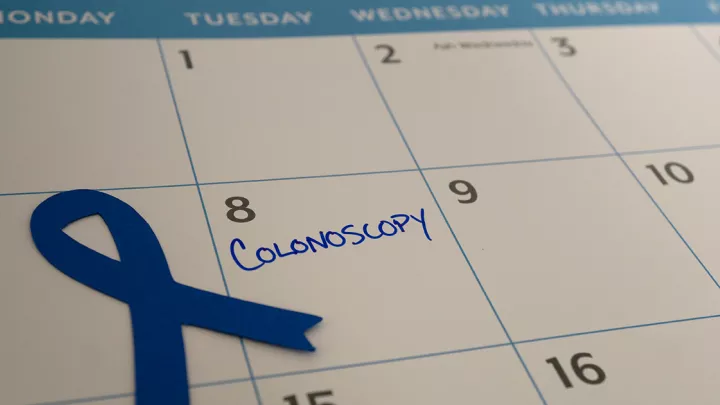Ostomy care and frequently asked questions

The reality of life after an ostomy can seem daunting. Still, lifesaving ostomy surgeries are more common than people may realize. Approximately 725,000 to 1 million people in the United States have a temporary or permanent ostomy, and 100,000 ostomy surgeries are performed annually.
What is an ostomy, and who needs one?
Ostomy surgery creates an opening (stoma) on the abdomen, causing changes in how urine or stool exits the body. Waste is rerouted from inside the body to the outside through the stoma. For most people, a pouch is worn over it to collect stool or urine. While there are various ostomy types, surgeons carefully choose the best possible spot to make the ostomy for best function after surgery. The majority of ostomy patients use disposable pouches.
Ostomies can occur at any age and do not lower life expectancy. An ostomy can occur as a result of several cancer types, including colorectal or bladder cancer, small or large intestine trauma, inflammatory bowel disease (IBD) like ulcerative colitis or Crohn’s disease, bowel obstruction, infection, fecal incontinence, long-term chronic and severe constipation or diverticular disease.
Ostomy care
Each person’s individual care needs are unique. Although facing ostomy care after surgery will likely raise many questions, it doesn’t have to keep you from doing the things you love.
“An ostomy doesn’t need to stop you from doing anything you could before; we just need to rethink how you might do things differently and adjust,” says ostomy care specialist and president-elect of the National Wound, Ostomy, Continence Nurses Society, Christine Berke, APRN-NP. “At our Ostomy Clinic, we help you learn what you need to know about ostomy care, but equally important is learning how to adapt, use the tools that work best for you, and support you through the emotional aspects. It impacts every single part of your life, and we’re here to help you navigate it.”
The focus for ostomy care begins by:
- Finding the best pouching system with a predictable wear time.
- Learning how the mechanics work and how to properly maintain, care for and dispose of the pouch system. Routine care depends on the type you have.
- Troubleshooting challenges as they arise.
Ostomy care can be a challenging topic to talk about. Discussing solutions with an ostomy care expert helps.
“Seeking out the care of an ostomy specialist is extremely helpful,” adds Berke. “In the past, patients would be in the hospital for much longer, which gave us more time to educate, counsel and support them during healing. With people going home much quicker now, offering resources and ongoing support is even more vital. So many patients I see are not using the right products or incorrectly using them. We can help you find solutions to ostomy challenges and help alleviate your frustrations.”
Ostomy FAQs
What are the most common ostomy issues that may arise?
Your body is always in motion, even with the simple act of breathing. Your skin is flexible and moves differently in each position. Changes during or after healing and even fluctuations in weight can require adjustments in your ostomy care approach and management.
Typical issues may include:
- Skin issues or wounds. Keeping your skin healthy is a priority. Your skin shouldn’t hurt, itch or sting. Skin irritation can occur for various reasons and range from mild to severe. Identifying the cause and treating the skin with the correct barrier products can help protect the skin and keep it healthy. You may need wound care if the skin around the stoma becomes severely irritated.
- Challenges with the pouch. Keeping the bag secure and preventing leaks are common complaints. Various ways to address these problems, such as trying different ostomy supplies, adjusting how the pouch is sealed or making other adjustments, are worth trying.
- Odor concerns. When the products are used correctly, everything is secure, and your skin is in good condition, there should be no odor or leakage.
- Hernia. These bulges can occur next to the stoma and impact the surrounding area. A hernia may require ostomy product adjustments or routine changes to manage symptoms and maintain consistent wear time. Specialty hernia wraps may help with compression for additional support. Physical lifting may be restricted depending on your situation.
Will an ostomy come with restrictions? Can I stay active, swim, exercise, travel or resume sexual intimacy?
Once recovered, people with an ostomy can do everything they did before surgery. The key is adapting and learning different ways to make those same activities work for you. A period of adjustment and approaching some activities differently is to be expected, but know that people of all ages can live an active life in every way moving forward.
Can I wear the same clothes after an ostomy? Will people notice I have an ostomy bag?
Many modern pouching systems are unnoticeable, allowing you to wear whatever fashion you desire. Try different things to find what is most comfortable and provides needed support. Customized garments, intimate apparel, wraps and undergarments are also available and designed specifically for people who have had ostomy surgery.
How often should an ostomy bag be changed?
The optimal wear time for disposal pouches is typically three to four days, but it can vary from person to person and type of ostomy.
Does insurance cover ostomy supplies?
Contact your insurance company for specific details about your coverage; some cover more than others, and individual plans may pay a percentage after your deductible is met. Medicare Part B generally covers 80%. There are usually maximum monthly quantities allowed. Since Medicaid varies from state to state, check with your state’s Medicaid office for specifics.







